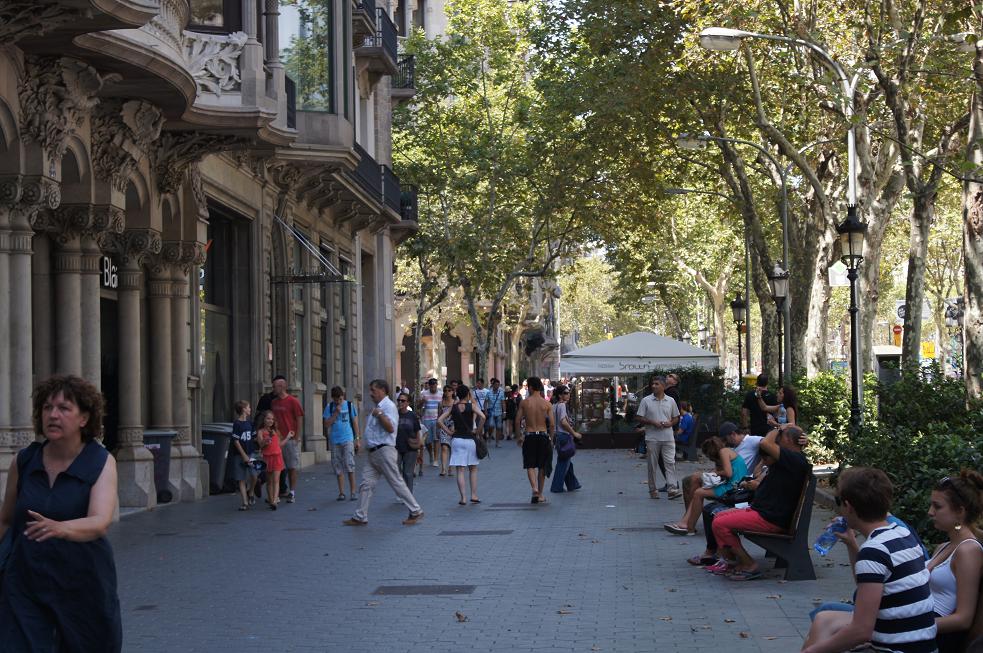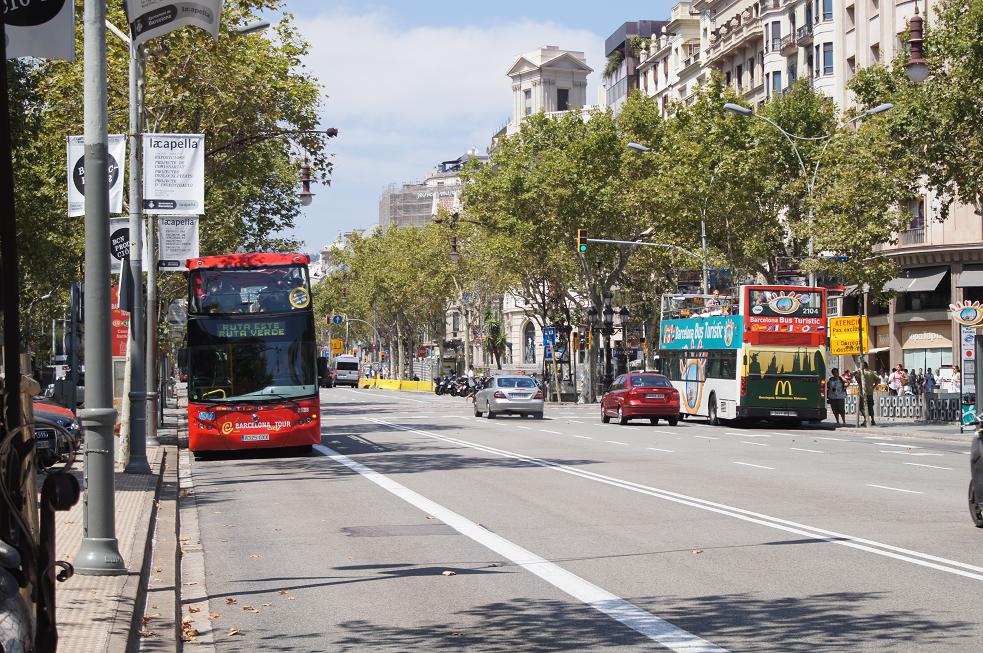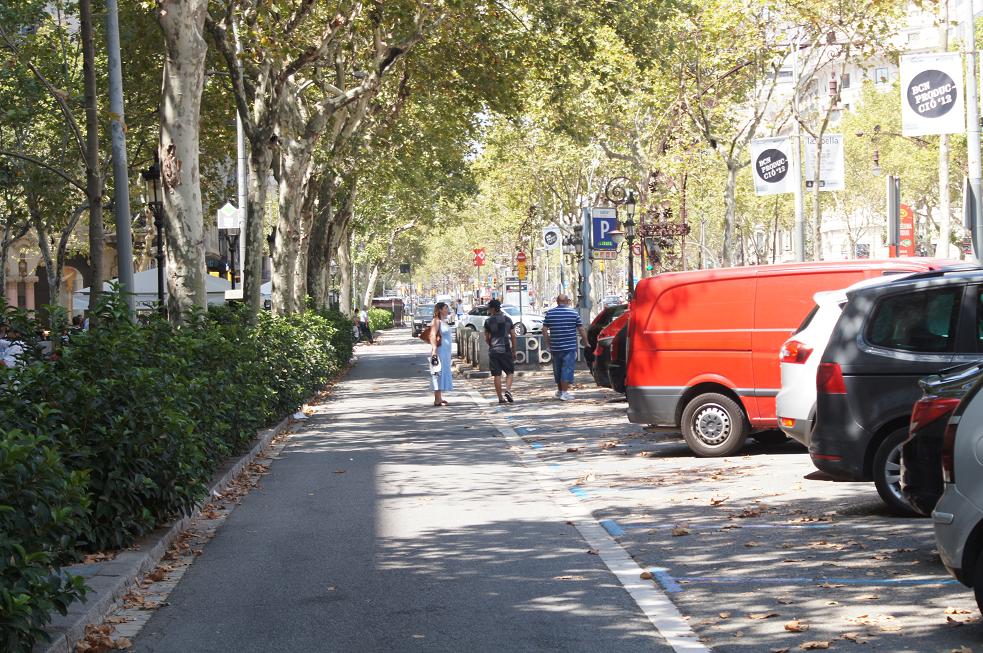The city planners of Barcelona, as I pointed out in my previous post, pay great attention to the details of street design. In contrast to the United States, where planners and traffic engineers design streets to optimize the movement of automobiles, Barcelonians endeavor to strike a balance between all users of streets, including vehicles, pedestrians, bicycles and motorcycles. The result is an arrangement, which combined with a development density as much as ten times greater than Richmond and other Virginia cities, that makes it easier for people to reach more destinations by foot, bike or mass transit.
In our perambulations today, my wife, son and myself spent time walking along (and lunching on) the Avinguda Diagonal. It would be impossible to build such a boulevard in a Virginia city — acquiring the right of way would be prohibitive. I don’t present this beautiful street to Bacon’s Rebellion readers with the idea that Virginians should emulate it but simply to demonstrate that the way we do streets is not the only way to do them. Avinguda Diagonal, the grand boulevard of a great European city, reflects a state of mind that balances the needs of all modes of transportation, not just automobiles.
The series of photos here show views of the Avinguda Diagonal looking west, all from roughly the same point of the road. The first (above) shows the view of the main avenue, which is restricted to motor vehicles, including buses, which enjoy their own dedicated lane.
The second photo (immediately below) shows an adjacent utility road, which is separated from the main street by a curb, sidewalk parked cars. We saw a number of bicycles and the occasional car using this path. In turn, this utility road is separated from pedestrians to the left by a row of trees and shrubbery.
And the third (below) shows a broad promenade alongside the phalanx of buildings. Here, people can walk, mingle and sit on benches with no fear of encountering cars. You can see how busy the walkway is. Undoubtedly, many of the people you see here are tourists who are drawn by two of Antonio Gaudi-designed architectural masterpieces nearby. But the ground level of nearly all buildings is dedicated to shops and offices which, I assume, draw a broad spectrum of the local population. To be sure, the street was not originally designed with the idea of attracting a tourist industry in mind.

Frankly, the Avinguda Diagonal, as beautiful as it is, strikes me as a bit of overkill. It must have been very expensive to build. You’d never see dedicated bike lanes and bus lanes on a single street in a Virginia city. On the other hand, the boulevard surely enhances the value of the magnificent buildings, which range from six to 10 stories in height, along the boulevard. Assuming Barcelona relies upon real estate taxes to finance its operations, the trade-off between taxes collected and expenditures spent maintaining the public areas of the street undoubtedly is a very favorable one.




